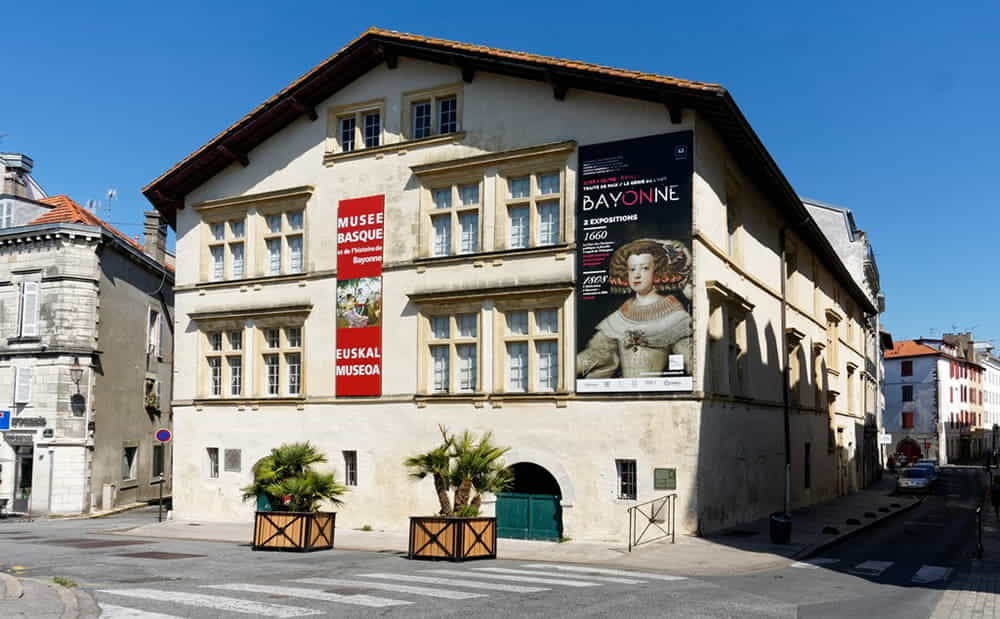SOIXANTE-NEUF FROMAGES FRANÇAIS
Jeannine & Roger's French Cheese Odyssey
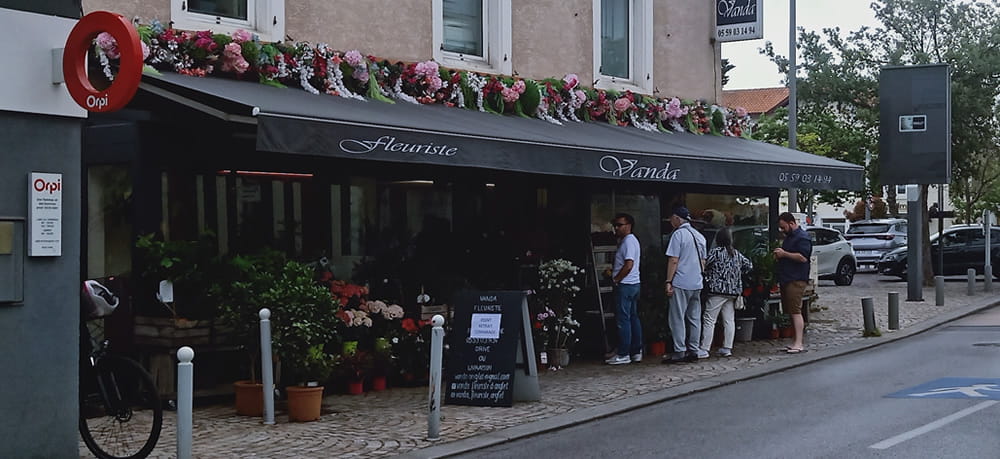
Anglet, Bayonne - 4th June
Today is Mother’s Day in France, which explains why the cafes were full, there were queues at the florists (photo above), queues at the bakery for cakes, and there was a party at the Optician's (photo below), actually I’m not sure what that was about.
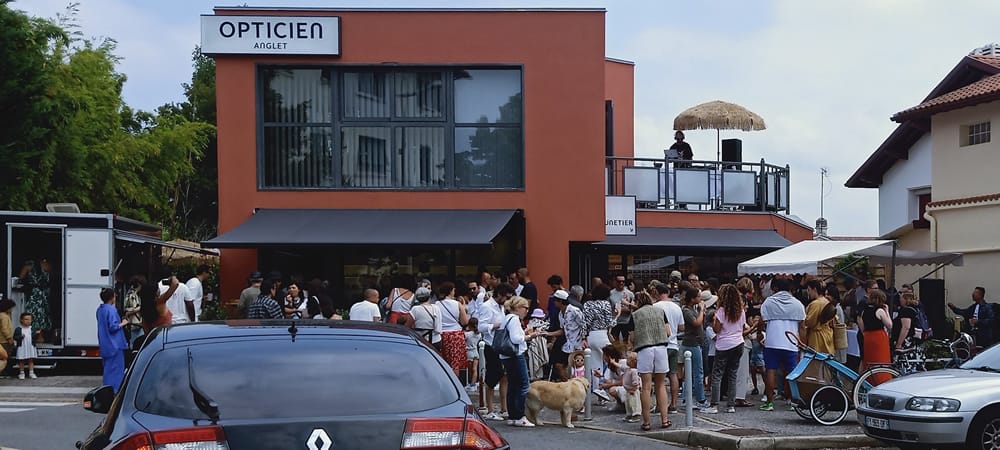
We went to Anglet for the Sunday markets; one in the Quintaou square mainly for local producers and one in the 5 Canton Halles, which was excellent for local meats, cheese, seafood, and Mediterranean pre-prepared food. Photo below is Quintaou’s sad looking kiwifruit, which weren’t as bad as the ones they were selling to make juice from.
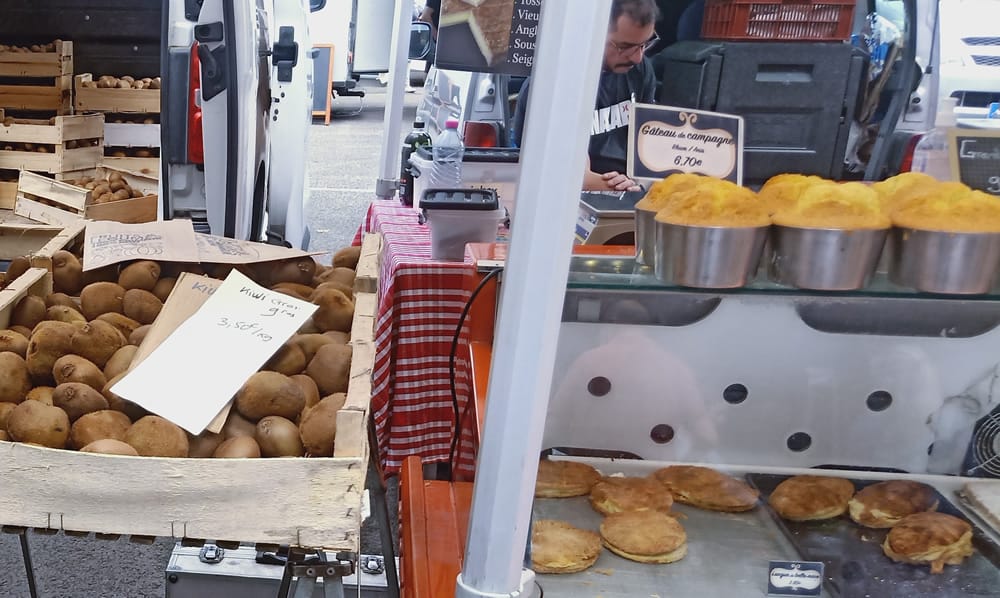
While in Anglet we went to view the local church from the outside. The doors are open as there was a service on at the time. The first photo below is of the Basque style church, painted white. The photo underneath that is a standard French church where the stone is left as its natural colour.

The same white-washing occurs in the villages; again the first photo is a Basque village and the second a standard French Village.

After our three hour siesta we went into Bayonne to view an exhibition, it wasn’t on but we found a tacky public garden and a couple of big boats where the two rivers meet.
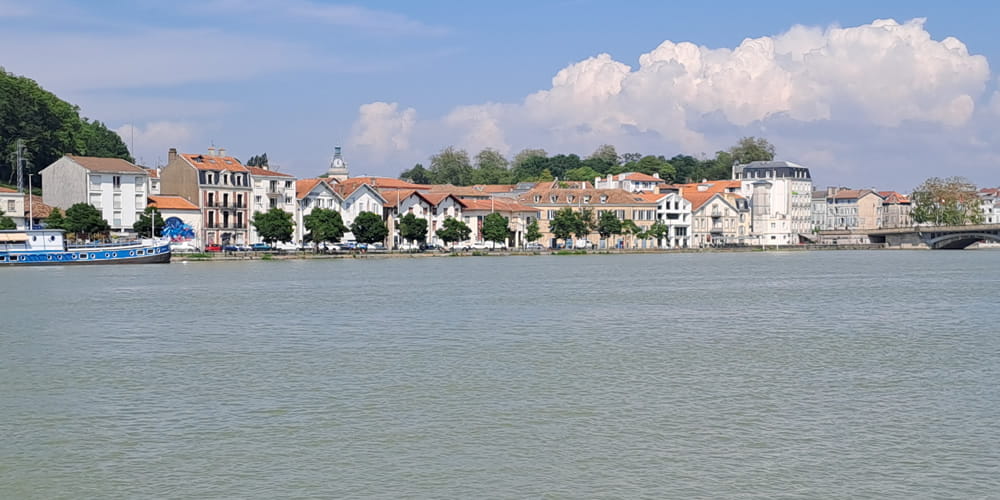
We also went to the Basque Museum because on the first Sunday every month it is free, yahoo, normally it is 8 Euros each.
The museum has the history of the Basque area and its people, plus all about the trader’s house that the museum is in. The nice lady on reception gave me an English guide book which was invaluable because it gave me some insight into sheep-cheese production in the old Basque country.
Cheese Experience No.44 - Old Basque Sheep Cheese Production: In the old days the shepherd would bring his flock down from the hills in Spring to the Cayolar. The Cayolar was an area of pasture with huts shared by seven shepherds; they rotated the daily tasks so that once a week each shepherd could go back home.
The milk is processed as follows to make cheese:- The milk is filtered, and heated in a copper pot to 30 degrees
- The first curd with the rennet is broken up with a whisk
- The milk is heated to 40 degrees to form a second curd, which is then separated from the whey; the whey is eaten as a low fat cheese
- The curd is put in a tray and compressed to strain it
- The curd is pressed by hand and heated over a fire to form a rind; it is then salted and regularly turned over 15-20 days.
- The cheese is removed from its mould and left to mature for a couple of months.
